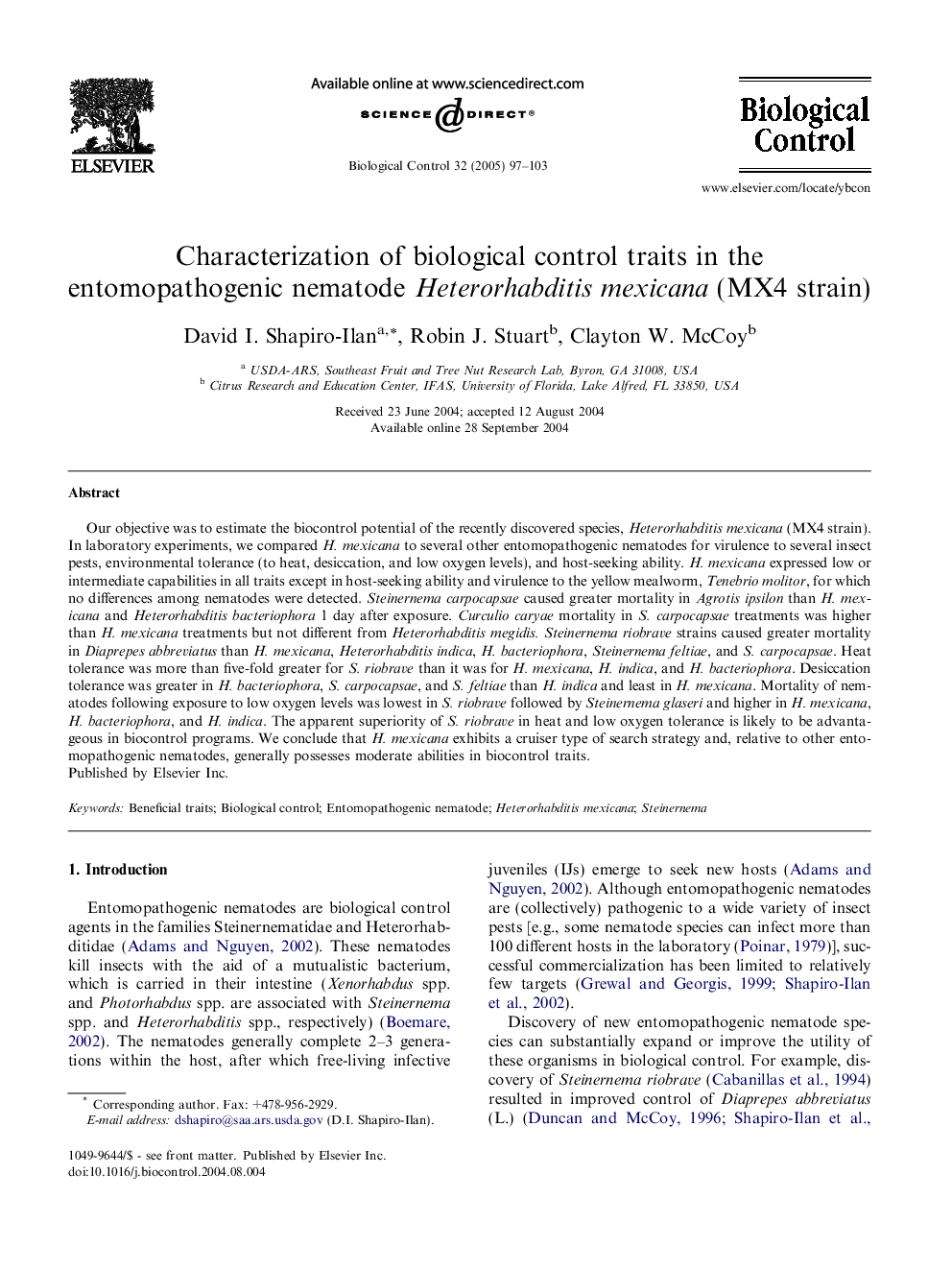| Article ID | Journal | Published Year | Pages | File Type |
|---|---|---|---|---|
| 9472092 | Biological Control | 2005 | 7 Pages |
Abstract
Our objective was to estimate the biocontrol potential of the recently discovered species, Heterorhabditis mexicana (MX4 strain). In laboratory experiments, we compared H. mexicana to several other entomopathogenic nematodes for virulence to several insect pests, environmental tolerance (to heat, desiccation, and low oxygen levels), and host-seeking ability. H. mexicana expressed low or intermediate capabilities in all traits except in host-seeking ability and virulence to the yellow mealworm, Tenebrio molitor, for which no differences among nematodes were detected. Steinernema carpocapsae caused greater mortality in Agrotis ipsilon than H. mexicana and Heterorhabditis bacteriophora 1 day after exposure. Curculio caryae mortality in S. carpocapsae treatments was higher than H. mexicana treatments but not different from Heterorhabditis megidis. Steinernema riobrave strains caused greater mortality in Diaprepes abbreviatus than H. mexicana, Heterorhabditis indica, H. bacteriophora, Steinernema feltiae, and S. carpocapsae. Heat tolerance was more than five-fold greater for S. riobrave than it was for H. mexicana, H. indica, and H. bacteriophora. Desiccation tolerance was greater in H. bacteriophora, S. carpocapsae, and S. feltiae than H. indica and least in H. mexicana. Mortality of nematodes following exposure to low oxygen levels was lowest in S. riobrave followed by Steinernema glaseri and higher in H. mexicana, H. bacteriophora, and H. indica. The apparent superiority of S. riobrave in heat and low oxygen tolerance is likely to be advantageous in biocontrol programs. We conclude that H. mexicana exhibits a cruiser type of search strategy and, relative to other entomopathogenic nematodes, generally possesses moderate abilities in biocontrol traits.
Related Topics
Life Sciences
Agricultural and Biological Sciences
Agronomy and Crop Science
Authors
David I. Shapiro-Ilan, Robin J. Stuart, Clayton W. McCoy,
